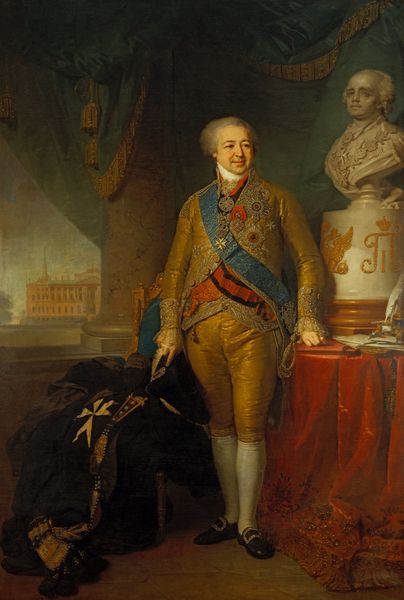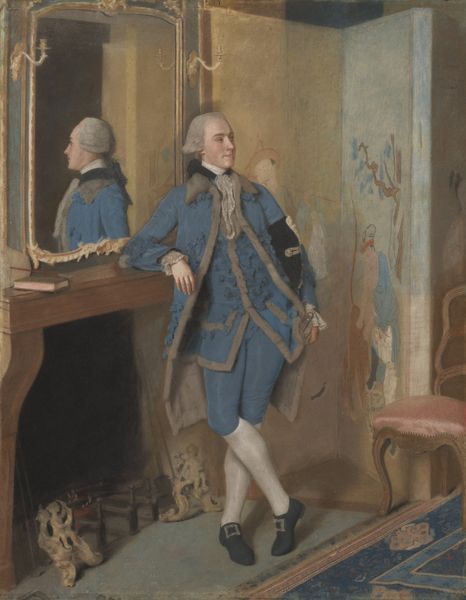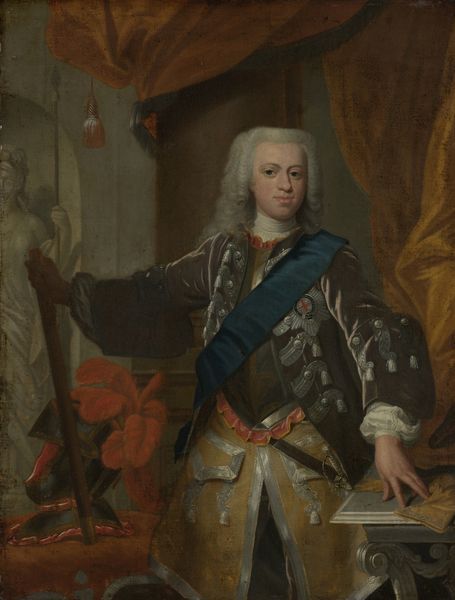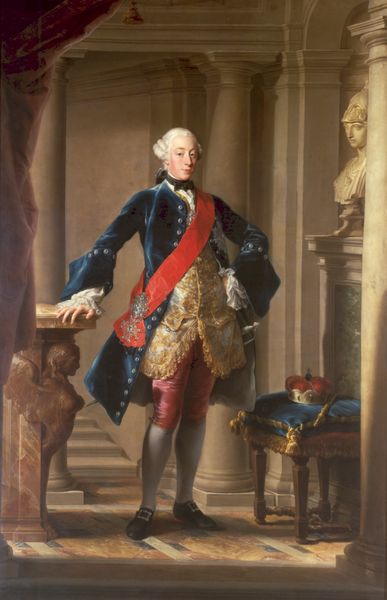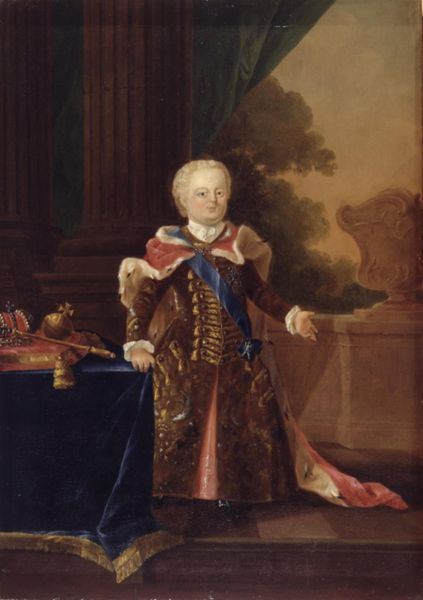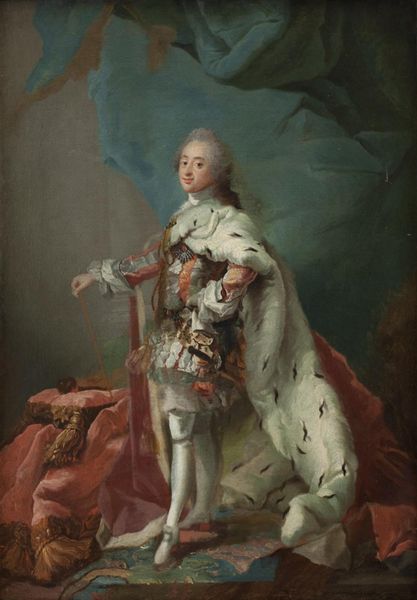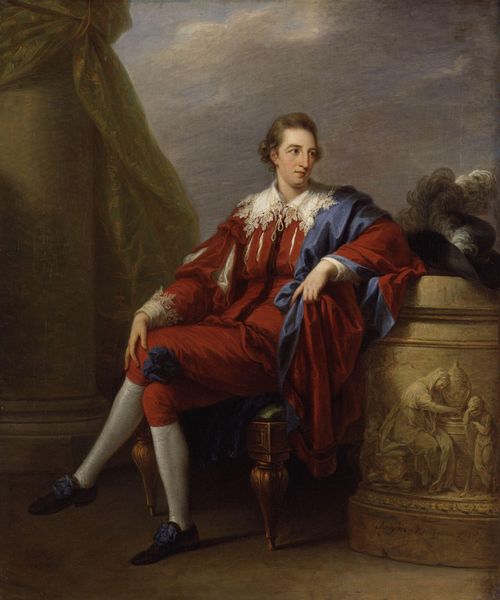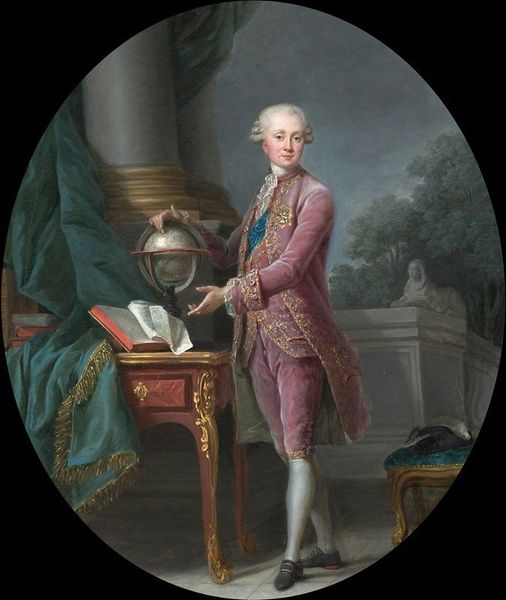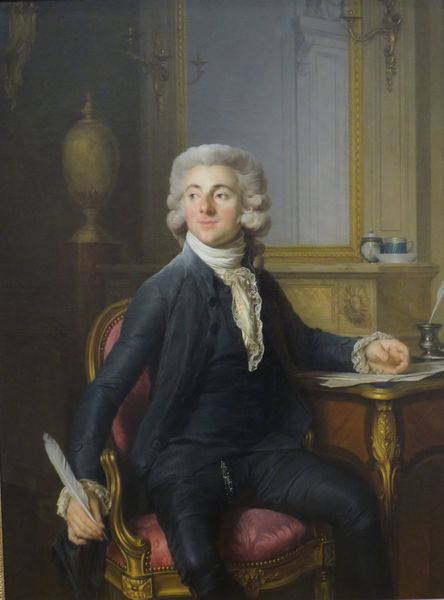
Dimensions: 235.4 cm (height) x 156.9 cm (width) (Netto)
Editor: This is Johann Georg Ziesenis's "Portrait of Frederik, Heir Presumptive," painted in 1767 with oil on canvas. He looks so young, and almost a little unsteady in his stance, considering the weight of expectation surrounding him. What’s your interpretation of this portrait? Curator: Well, consider the historical context. Royal portraiture served as a tool for constructing and disseminating power. The Baroque style here, with its opulence and grandeur, reinforces Frederik's dynastic status. But what about the symbolism surrounding him? Editor: You mean like the fur-lined chair and the classical architecture? Curator: Precisely. They represent authority and lineage, rooting his identity in established power structures. However, there's also a drum and open book – alluding to possible themes of military accomplishments and enlightened leadership. How might this idealized portrayal obscure or manipulate Frederik's actual identity, turning him into more of a symbol? Editor: So, the artist is less concerned with capturing Frederik’s individual likeness, and more invested in communicating his future role within the monarchy? The portrait isn’t really "him", but more of a fabrication, a… prophecy? Curator: Exactly! The portrait engages in a dialogue of constructed identities – the weight of history versus individual agency. It makes you wonder: How much control did Frederik have over his own narrative, represented here for political consumption? Editor: This is fascinating. I had initially just seen a straightforward portrait of a young royal, but now it's clear this is really a constructed image, laden with symbolism about power, identity, and political agenda. Thank you for your insight! Curator: My pleasure! Analyzing the power dynamics embedded within such images opens a window into understanding how identity is shaped and used within social and political systems.
Comments
No comments
Be the first to comment and join the conversation on the ultimate creative platform.

